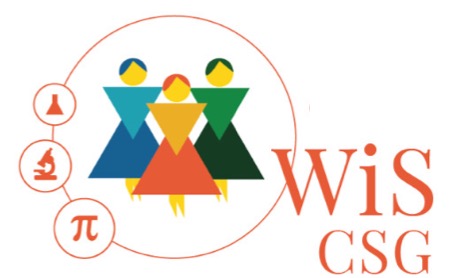WiS-CSG 2018 Survey

WiS-CSG: Women in Science - Career Support Group, is a group of volunteers who aim to highlight the different challenges faced by women in science.
Gender Diversity Paradox: Her Leadership Story
| PREVIOUS POST | RETURN HOME | NEXT POST |
- Authors: Soudeh Yaghouti and Poorva Dharkar
Full version on sciwri.club
Summary
Gender disparities still exist arguably in STEM research environments. Statistics show considerable gender inequality in the career advancement of women professionals, specifically in the leadership levels in both science and technology environments. USA is among the top 10 countries with the highest investment in STEM and total number of researchers (4255 researchers per million inhabitants), however, women accounted for less than 32% of the scientific landscape across North America in 2015. According to a report provided by the National Science Foundation (NSF) in 2015, male participation (206,000) surpassed female participation (123,000) in the academic doctoral science and engineering workforce. The number of female students who earned doctoral degrees in the US in the STEM fields has been steadily increasing since 2004 and has been either almost equal or even exceeded that of the male doctoral graduates. Still women mostly hold junior faculty positions (42.5%) as compared to senior faculty roles (30.9%). In a study published by the National Academy of Sciences females were underrepresented in high profile biology labs led by elite male faculty where male grad students and postdocs outnumbered their female counterparts by two to one and three to one respectively. High performing female labs, however, did not reflect this issue. Even independent biomedical research fellowship programs which provide an alternative path to lead a lab and achieve non-tenure track positions, report evidence on the presence of gender bias in a recent study published in 2019. Men win a major share of scholarly awards, while women receive a higher proportion of teaching and service accolades due to imbalanced representation. The smaller pool of potential women nominees is not because of the lack of talent. Nobel Prize winners and trailblazers like Professor Donna Strickland and Professor Frances Arnold have discussed the various explicit and implicit barriers they faced over their lifetime that impeded their scientific career progression. Although 62% of women earn PhDs in the life sciences, 77% do not have any women on their scientific advisory boards. Another statistics from 2013-2017 shows that biotech IPOs consistently had women underrepresented among their CEOs, boards of directors, scientific advisory boards, and C-level leaders etc. These issues highlight the view that to claim leadership positions, women researchers have to overcome significant gender bias and severe lack of good mentorship to compete on an equal platform with men.
To build a better knowledge base and uncover the issues faced by women scientists, CSG-WiS launched an international dialogue at the nexus of gender and scientific research, with an aim to create new applied knowledge and to help in the development of evidence-based policies and practices. We gathered data on the status of gender equity in academia and industry through the personal experiences of 219 researchers residing across the world and 5 subject areas. In the present article, we highlight gender gap in academia and try to identify whether and why women lack leadership opportunities. Moreover, we provide recommendations on various avenues to nurture women leadership and discuss how embracing diversity can help us advance towards gender parity in STEM.
| PREVIOUS POST | RETURN HOME | NEXT POST |